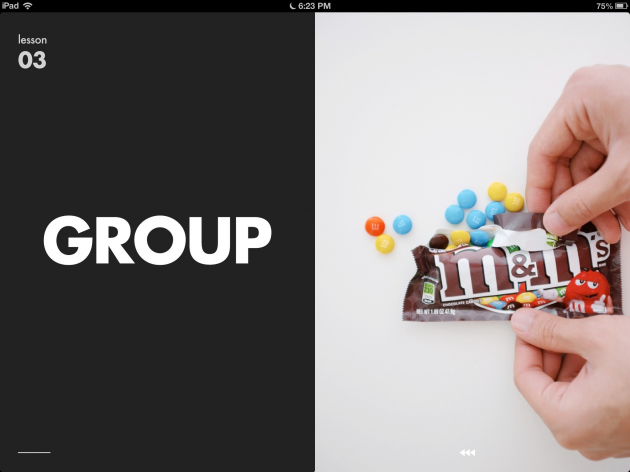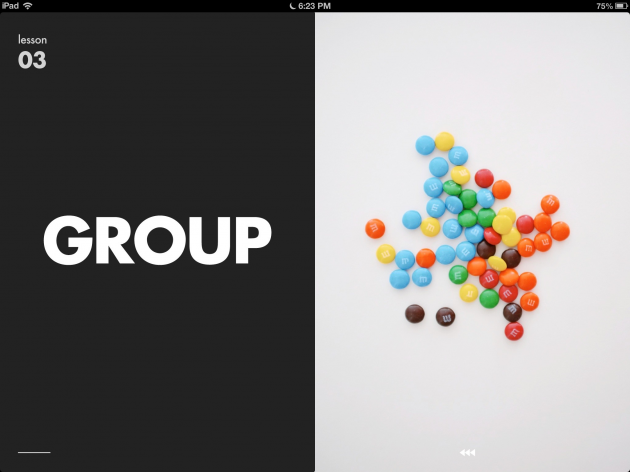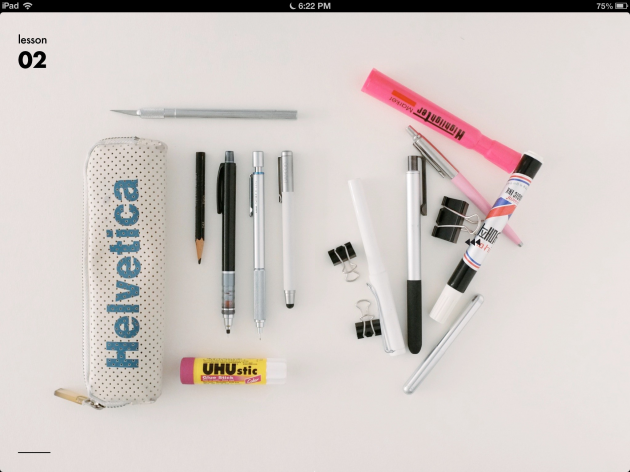The term ‘Knolling’ has been around since the mid-1980’s and is centered around the practice of organizing any number of objects for a specific purpose in an easy-to-view manner. More recently, design blogs, style magazines, and recipe books have used the practice as a way to instantly communicate a grouping of objects—whether it be items one carries in a pocket or purse, tools used for a specific craft, or ingredients used for a recipe. In 90 Degrees, Andrew Kim takes the reader on an interactive journey into the history of Knolling and why you–as well as everybody, should ‘Always Be Knolling’.
Always Be Knolling
In 1987, a janitor at Frank Gehry’s furniture workshop by the name of Andrew Kromelow started arranging unorganized tools at right angles on surfaces, and called the practice knolling. At the time, Gehry was developing furniture designs for Knoll and Kromelow was inspired by angles in the furniture. The resulting organization of displaced tools allowed Gehry to walk into the shop in the morning and be able to see all of his tools at once…and not only in an organized fashion, but also one of beauty and considered substance. One of Gehry’s assistants by the name of Tom Sachs adopted Kromelow’s practice and it became a mantra for his own studio years later, where he also added the term Always Be Knolling (ABK):
BULLET II: ALWAYS BE KNOLLING (ABK)
-Scan your environment for materials, tools, books, music, etc. which are not in use.
-Put away everything not in use. If you aren’t sure, leave it out.
-Group all ‘like’ objects.
-Align or square all objects to either the surface they rest on, or the studio itself.-Tom Sachs, Bullet II in 10 Bullets
Inspired by Tom Sachs, Kim developed 90 Degrees within iBooks Author (a free application for iPad book creation) and the final product is an interactive book loaded to the brim with explanatory videos and lessons that guide the reader through the history and practice of perhaps the most beautiful and effective form of organization, ever. It is also the only known book about the subject to date:
Starting with a brief history of the subject and how Knoll was involved, the book moves the reader through the act of the practice, as well as how knolling already exists in our everyday lives without us perhaps even realizing it. Among other organizational story lines, we are led down a road of chaotic scenes of M&M’s, only to be later organized by a grid pattern into even and perfect rows organized by color. Other examples include an aerial shot of a completely displaced modern desk environment, of course followed by how one might go about organizing those displaced objects. The sheer beauty of organization shines through the pages as Kim emphasizes his hypothesis through the use of minimal text and large, beautifully photographed examples. The clean and consistent layout of the pages keep the eyes on the task-at-hand and one might almost feel as though they are being led through an interactive video rather than a book–as Kim really drives the point home by using a parallax swiping experience to move the reader through each a displaced and an organized scenario in each of the organizational stories, which are broken up into ‘lessons’ on how to integrate the practice gradually into everyday life.



It should also be noted that while the book content itself is stunning, it is also worth a read just to see the sheer power of what iBooks Author is capable of. Released during the time the iPad was decided as the physical textbook-killer, the application has rarely impressed–coming off as a sort of iMovie cookie-cutter machine for middle school projects and somebody’s grandmother’s scrapbooking hobby. Kim proves that the application really can pull off something worth publishing for a design market through his carefully-considered layout patterns, typographical considerations, image editing, and as mentioned, parallax scrolling. As much as I love that old-fashioned smell of paper and the flipping of physical pages, this is the exact type of book that I love to soak in digitally—and is perhaps the standard for what all books on the iPad (and other tablets) should be.


Regardless of how OCD or not you may already be (I’m looking at you Adrian Monk), this book is worth it’s $1.99 price for the sheer sake of just inspiring us all to live more organized lives. From the M&M’s, to our toolboxes, to the ingredients we’re preparing our meals with, if there is one thing Kim convinces the reader—it is that you should follow in Tom Sachs’ footprints and…
Always. Be. Knolling.
Verdict
9/10
Pros:
- User Experience is well-considered for iPad reading
- Stunning visuals and relevant content
- Affordable for most at $1.99
- Stretches the boundaries of what’s possible with iBooks Author
Cons:
- Large file size (443 MB)
English, iPad, 89 pages
90 Degrees is $1.99 and available in the iTunes Store






